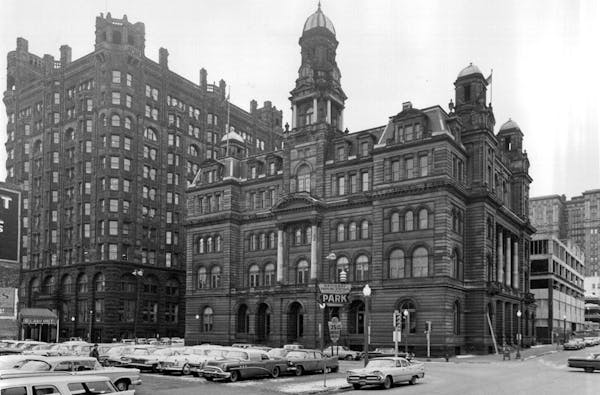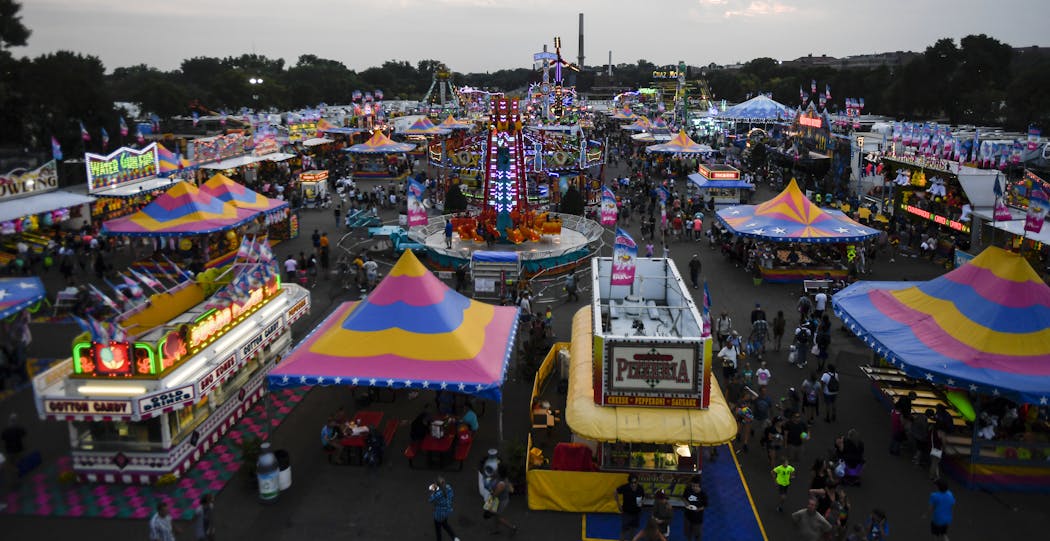Advocates of the New Urbanism design movement prize dense, vibrant cities with an array of housing and jobs.
Guess what? We've got a model of New Urbanism right here in the Twin Cities: It's called the Minnesota State Fair.
Is the Great Minnesota Get-Together a model of what our cities should look like?
Well, no.
But let's not be too quick to dismiss the question. It's instructive, when you look at how the fair resembles a small town, albeit one whose population is 98 percent transient. We might conclude that we love the fair because it's the town we'd like to live in — if the lines were a bit shorter, that is.
Putting the mass in transit
The fair, you might have noticed, has no car traffic, yet there are streets and sidewalks. It looks like a city that banned cars, and doesn't seem to mind. If one needs to get somewhere quickly, there are electric carts, propane-powered trolleys and two aerial transportation systems.
To get to the fair, you can drive your car, but the lots fill up fast, and the roads are clogged. Parking on the surrounding streets is permitted, but scarce. Hence savvy travelers take mass transit, which maintains a robust schedule — and even has a dedicated bus lane by the University of Minnesota.
This is more or less the dream for New Urbanism transit advocates.
Mixed-use zoning
While the fair isn't zoned, it does have distinct districts. There's the livestock district, with its coliseum and concrete barns, and its own sounds and aromas. The northeast side of the fair tends toward the high-minded (think fine arts, crafts, education), while the north-central area (formerly known as Machinery Hill) still has a big-engine feel.
The Kidway anchors the tot-centric portion of the grounds next to the Mighty Midway, the entertainment district. While the midway has become rather wholesome over the years, there's gambling of a sort in the games, and it feels like a place where you might be able to find a sword swallower or hootchy-kootchy dance tent.
But music venues dot the fairgrounds and there's food everywhere, as you might have noticed. Civic, political and religious organizations are spread throughout.
The fair, in short, is rarely confusing, but always surprising.
Right-sized housing
You might not think that the fair has housing, until you remember the campers, the trailers, the mobile homes.
In fact, there's a well-developed, if temporary, residential district on the fringe of the fairgrounds. And it's dense enough to make government housing high-rises look like an Eden Prairie cul-de-sac. The housing stock ranges from tidy little vehicles to large ones, McCampers, if you wish.
They're all single-family dwellings, but no one has a private lawn or backyard.
Pedestrian-friendly
Here's where the fair really shines, right? It's designed for people on foot. You can walk the sidewalks, the boulevards, the streets, anywhere really, without fear of getting run over.
On a weekend the streets are as dense as any megacity in the world. That requires Minnesotans to recalibrate our sense of personal space; we learn to dodge or walk at the crowd's pace.
Where did all of these people come from, we wonder. But we don't really care. Because here we are, all milling around, and what an interesting crowd we make.
And it's glorious! And we'd go nuts if it were like this all the time.
The fair might seem like the perfect city, but, honestly, we'd tire of it quickly.
We'd tire of the crowds, the small living spaces, the jobs in grease pits without A/C, the late-night roar of the midway diesels.
But we love the fair because it feels like the most unusual city in the state — a place where the domestic product is joy, and the mayor is a gopher.
James Lileks • 612-673-7858 • @Lileks
Here's how Phish is using the Sphere's technology to give fans something completely different
4/20 grew from humble roots to marijuana's high holiday





